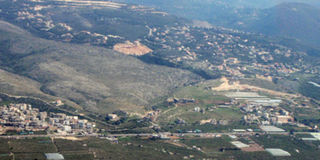Will Beirut rise above challenges?

I have been watching a lot of news and updates from Lebanon with huge protests about the failure of the local government to organise garbage collection in Beirut.
This city that is considered the Paris of Middle East is suffering from horrible stenches and a looming health disaster.
During late 60s, even as a child, I remember that Beirut was the destination everyone looked forward to visiting, especially by people from the Middle East who found it a haven of freedom and modernity.
Here was a place where people spoke their language (Arabic) but their city looked European, dressed European and above all, behaved European. I recall that one day an Arab friend of my mother, who usually wore covered clothes, showed us her photos in Lebanon where she was wearing a mini skirt in the streets of Beirut.
Besides that, the pleasant weather of Beirut created a cool escape from the summer heat, it’s green flora and hilly landscape made a stark contrast to the mostly arid and desert regions nearby, this city was truly considered a mini Switzerland of the Middle East.
Then 1975 happened! A lethal combination of religion, politics and sectarianism plunged this heaven into a civil war that turned it’s beautiful and peaceful streets into living hell, and though a peace treaty was signed in the late eighties to end this war, Beirut never really recovered.
My first journey to Beirut was in 2011, for someone who had travelled extensively it was an overdue trip, but I finally made it. The illustrations I was given about Lebanon in my childhood was imprinted in my mind, painting such a magnificent picture that I was looking forward to see.
Alas, all this was to vanish when faced with the reality. Driven from the airport by a very old taxi to the centre of town carried a lot of surprises, passing by very modern sections of this town to very old and dilapidated ones, what a contrast that was.
However, the most surprising was the fact that bullet marks of the civil war that covered many buildings were still very prominent, no efforts were made to change any of that.
Even then, cleanness was not the strongest point of this cosmopolitan city, but nonetheless one would forgive that for the breathtaking view of Our Lady monument in Harissa! A breathtaking travel by Telefric carts from the bottom of the mountain to the top, and then watching Beirut from a bird’s eye prospective.
One would forget the old city by travelling just 20 km to the north reaching what is considered one of the wonders of our world, the Jeita Grotto! A series of underground caves that one can explore through a boat ride.
And of course Nothing can beat Lebanese food, that delicious cuisine of specially Mezas ( appetizers) that are known all over the world. I am hoping that one day, soon, Lebanon will rise above destruction and rebuild it’s past glory!
About the city
Beirut is the capital and largest city of Lebanon. No recent population census has been done but in 2007 estimates ranged from slightly more than 1 million to slightly less than 2 million as part of Greater Beirut.




